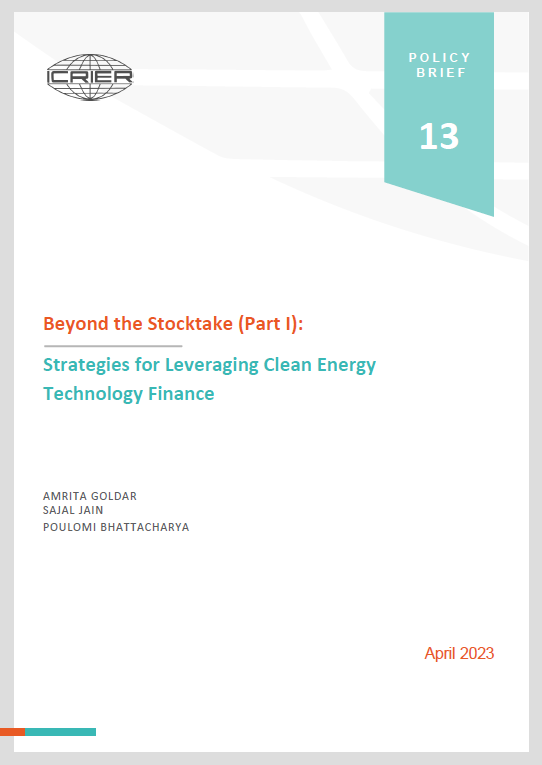
Policy Brief No. 13 | April 2023
Clean energy development for almost all G20 countries, be it developing or developed, stands at restricted levels for green hydrogen produced from biomass for heat and electricity. Therefore, a greater emphasis must be placed on deploying renewable energy sources and helping clean technologies businesses gain the wherewithal to avoid the valley of death, the series of challenges that high-tech start-ups often face in the early stage of development culminating into failures. Developed countries are in a better position than developing countries to raise clean finance, i.e., for clean energy development. Challenges faced by G20 developing economies in raising clean finance include a lack of green taxonomies, a lack of an implementation mechanism for climate risk assessments, and the absence of proper effective initiatives towards a carbon pricing structure. A big-push is required to make early-stage clean energy technologies enter the market and get embraced by business developers, which needs commensurate supportive financial flows. Aside from a greater emphasis on international collaboration/cooperation to help the process, the issues that need resolution include a) matching the finance requirement with demand, b) accounting for differences in costs of capital, and c) establishing green state investment banks. There is a crucial need for the international community to step in and facilitate public financing of climate-related finance needs of developing economies. It has been observed that private investments in the broader climate technology are often set to fall, with the fear that the previous bust of investments in clean technology may repeat. While a significant scope of expansion of private investments exists, its risk-averse nature and the lack of initial support hinder the tapping of the opportunity.







